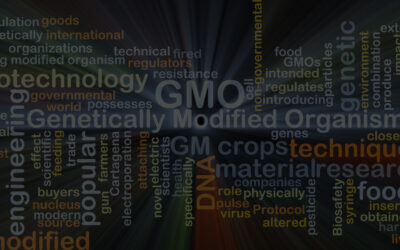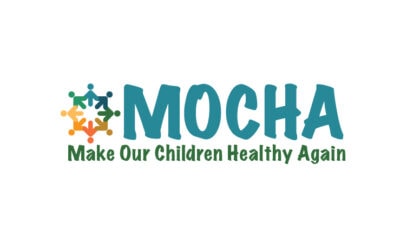Rats fed the genetically modified yeast-derived protein soy leghemoglobin – the burger’s key ingredient – developed unexplained changes in weight gain and signs of toxicity. Report by Claire Robinson and Michael Antoniou, PhD
At-a-glance
- The Impossible Burger is a plant-based burger, the key ingredient of which is a protein called soy leghemoglobin (SLH), derived from genetically modified (GM) yeast
- A rat feeding study commissioned by the manufacturer Impossible Foods found that rats fed SLH developed unexplained changes in weight gain, changes in the blood that can indicate the onset of inflammation or kidney disease, and possible signs of anemia
- Impossible Foods dismissed these statistically significant effects as “non-adverse” or as having “no toxicological relevance”
- The company’s conclusion of safety is unsound, due to the short duration of the feeding study and the small number of animals used. Only a longer-term study with a larger number of animals can clarify the significance of the worrying effects seen
- A nonprofit group is collecting data from people who believe they have had an adverse reaction to the burger.
The Impossible Burger is a plant-based burger, the key ingredient of which is a protein called soy leghemoglobin, derived from genetically modified (GM) yeast. The burger arrived in New York City’s restaurants with much fanfare – but now it is almost impossible to find, according to an article in the New York Post.1
Possible reasons put forward by the Post’s reporter include that the burger is expensive and can’t compete with cheaper options; that the company that makes it, Impossible Foods, is having manufacturing problems that mean it can’t keep up with demand; and that people don’t see any reason to buy it when plant-based veggie burgers with more everyday ingredients are commonly available.
But it’s also possible that NYC restaurant owners and their customers are becoming aware – and wary – of the GMO (genetically modified organism) status of the product and are choosing to avoid it. The results of a rat feeding study commissioned by Impossible Foods and carried out with soy leghemoglobin (SLH) suggest that they may have good reason.
SLH is the substance that gives the burger its meaty taste and makes it appear to bleed like meat when cut. The US Food and Drug Administration (FDA) initially refused to sign off on the safety of SLH when first approached by the company. The rat feeding study results suggest that the agency’s concerns were justified. Rats fed the genetically modified (GM) yeast-derived SLH developed unexplained changes in weight gain, changes in the blood that can indicate the onset of inflammation or kidney disease, and possible signs of anemia.
2015: FDA says SLH safety not proven
The company maintains that SLH is safe to eat.2 It wanted the US Food and Drug Administration to agree with its self-declared conclusion that SLH is “GRAS” (Generally Recognized As Safe), providing reassurance for consumers. But in 2015, in response to Impossible Foods’ first application, the FDA refused to agree that the substance was safe. It responded with tough questions for the company, as revealed in documents obtained under a Freedom of Information request.3
The FDA was concerned that SLH has never been consumed by humans and may be an allergen. The agency pointed out that the safety information submitted by Impossible Foods was not specific enough: “Although proteins are a part of the human food supply, not all proteins are safe. Information addressing the safe use of modified soy protein does not adequately address safe use of soybean leghemoglobin protein from the roots of the soybean plant in food.”3
The FDA concluded, “FDA believes that the arguments presented, individually and collectively, do not establish the safety of SLH for consumption, nor do they point to a general recognition of safety.”3
2017: Impossible Foods tries again
In 2017 Impossible Foods tried again with a new application for GRAS status. It submitted data from a study that the company had commissioned in which rats were fed SLH.4 Although Impossible Foods had in its 2015 submission told the FDA it intended to conduct a 90-day feeding study (the standard length for subchronic toxicity in rats), the company said that following “feedback” from the agency, it had decided on a shorter study of 28 days.3
While this change would cut costs for Impossible Foods, it is not in the public health interest. That’s because the shorter the duration of a study, the less likely it is to find health effects such as organ damage, which take time to show up.
The number of animals and duration of a feeding study are two key design elements in an investigation of the safety of a new GM food substance.
It was always unlikely that SLH would have strong and obvious toxic effects in the short term; any adverse effects from a novel food substance would likely be subtle. Long-term studies with relatively large numbers of animals are required in order to reveal the significance of such effects. Given these requirements, it seems clear that Impossible Foods’ study was statistically weak. There were too few animals in each test group (10 per sex per group) and again, the study was too short in duration (28 days in a rat is equivalent to just 2-3 years in a human) to clarify any health concerns from long-term consumption of this product.
Adverse effects in SLH-fed rats
In light of these limitations, it is remarkable that the SLH-fed rats did show a large number of statistically significant potentially adverse effects, compared with the control group – for example:
- unexplained transient decrease in body weight gain
- increase in food consumption without weight gain
- changes in blood chemistry
- decreased reticulocyte (immature red blood cell) count (this can be a sign of anemia and/or damage to the bone marrow where red blood cells are produced)
- decreased blood clotting ability
- decreased blood levels of alkaline phosphatase (can indicate malnutrition and/or celiac disease)
- increased blood albumin (can indicate acute infection or damage to tissues) and potassium values (can indicate kidney disease)
- decreased blood glucose (low blood sugar) and chloride (can indicate kidney problems)
- increased blood globulin values (common in inflammatory disease and cancer).4
The fact that these changes were seen in spite of the statistical weaknesses of the study gives particular reason for concern.
Reproductive changes in SLH-fed females?
In the study, apparent disruptions in the reproductive cycle were found in some groups of females fed SLH. In normal healthy rats, the uterus fills up with fluid during the proestrus phase of the cycle, in the run-up to the fertile and sexually receptive phase (estrus). In the SLH-fed rats, significantly fewer “fluid filled” uteri were seen. This correlated with decreased uterus weight, as might be expected.4
In response to this finding, Impossible Foods commissioned a second rat feeding study,4 which found no effect on the SLH on the rats’ estrus cycle. The company concluded that the findings of the first study had been a mere artifact of the experimental method used.4 For the sake of the women who eat the Impossible Burger on a regular basis, we hope that the company is correct.
All effects dismissed
All these effects were dismissed by Impossible Foods as “non-adverse”, as having “no toxicological relevance”, as “transient” on the grounds that they appeared to reverse themselves after some days, and as not dependent on the dose (i.e. the effect did not increase with increasing dose).
It is true that the adverse outcomes may appear somewhat haphazard. However, the fact that there were so many statistically significant changes in multiple organs and systems suggests that closer scrutiny of the safety of SLH is urgently required. The apparent randomness of the effects may be due to the fact that the study design was statistically weak. And it is well known that toxic effects do not always follow a linear dose-response pattern.5 Dismissing the findings as irrelevant appears irresponsible.
The only way of ascertaining if potentially adverse effects seen in short studies are truly adverse or have lasting consequences is to extend the study length to the rats’ full lifetimes (2-3 years) and to do multigenerational testing. In this case, neither was done.
FDA capitulates
Impossible Foods’ second attempt to obtain GRAS status for SLH succeeded and the FDA issued a “no questions” letter, indicating that it had no further questions.6
Contrary to what many people believe, such letters are not an assertion by the FDA that the food in question is safe. They state that the company asserts that the food is safe and remind the company that it, and not the FDA, is responsible for ensuring that it only puts safe foods on the market.
“No questions” letters may protect the FDA from liability in case something goes wrong. But they do not protect the consumer from unsafe novel foods.
Another GMO ingredient
Impossible Foods recently introduced a new recipe for its Impossible Burger. In addition to GMO-derived SLH, the burger now contains another GMO ingredient: protein from herbicide-tolerant soy.7 The company introduced soy protein to replace wheat protein in order to improve the texture and to avoid gluten, the protein in wheat that some people cannot tolerate.8 As a result, Impossible Burger Version 2.0 may contain residues of the “probable carcinogen” glyphosate,9 the main ingredient of the herbicide used on GM soy.
Knowing the concerns that the use of GMO soy protein and glyphosate residues may raise, Impossible Foods CEO Pat Brown has gone to some lengths to reassure the buying public.10 But the history of the Impossible Burger thus far suggests that people are unlikely to get meaningful answers to safety questions from the regulators or the manufacturer.
Now a nonprofit group has stepped in to try to fill some of the information gaps. GMO Free USA states that its mission is to educate people about the potential hazards of GMOs and synthetic pesticides. The group has launched a health survey to gather the experiences of people who believe they have had an adverse reaction to the burger. GMO Free USA says it took action because “We have been contacted by a few people who have experienced gastrointestinal problems after eating the Impossible Burger (IB). There is currently no simple mechanism for people to report these problems to the FDA.”
The group plans to send its findings to the FDA and Impossible Foods. Whatever the results, based on what we already know about the potential health effects of the Impossible Burger, the company would be well advised to shelve SLH and the reformulate their product with natural – and if possible organic – ingredients.
Claire Robinson is editor at GMWatch.org. Michael Antoniou, PhD is a London-based molecular geneticist. Contrary to allegations received following the publication of a previous article about the Impossible Burger, they were not paid to write this article by the livestock industry. They are vegetarian, but respect all dietary choices based on minimally processed and organic foods.
References
1. Cuozzo S. Why the overhyped Impossible Burger won’t survive in NYC. New York Post. https://nypost.com/2019/06/04/the-impossible-burger-is-just-an-overhyped-failure-in-nyc/. Published June 4, 2019. Accessed June 10, 2019.
2. Strom S. Impossible Burger’s ‘secret sauce’ highlights challenges of food tech. The New York Times. https://www.nytimes.com/2017/08/08/business/impossible-burger-food-meat.html. Published December 22, 2017. Accessed February 27, 2019.
3. Morgan Lewis & Bockius LLP. Response to FDA Questions – GRAS Notice 540 soybean leghemoglobin – Impossible Foods, Inc. May 2015. https://www.google.com/url?sa=t&rct=j&q=&esrc=s&source=web&cd=1&ved=2ahUKEwj0loTyjonjAhUQQEEAHX5fA5cQFjAAegQIBBAC&url=https%3A%2F%2F1bps6437gg8c169i0y1drtgz-wpengine.netdna-ssl.com%2Fwp-content%2Fuploads%2F2017%2F08%2F072717_Impossible_Burger_FOIA_documents.pdf&usg=AOvVaw39TKTfQVQ91ki0HubfZnEd.
4. Impossible Foods, Inc. GRAS notification for soy leghemoglobin protein preparation derived from Pichia pastoris: GRAS Notice (GRN) No. 737. October 2017. https://www.fda.gov/media/124351/download.
5. Hill CE, Myers JP, Vandenberg LN. Nonmonotonic dose–response curves occur in dose ranges that are relevant to regulatory decision-making. Dose-Response. 2018;16(3). doi:10.1177/1559325818798282
6. US Food and Drug Administration (FDA). Re: GRAS Notice No. GRN 000737. July 2018. https://www.google.com/url?sa=t&rct=j&q=&esrc=s&source=web&cd=1&cad=rja&uact=8&ved=2ahUKEwikvJT7t9zgAhV4TBUIHWRGBgAQFjAAegQIBxAC&url=https%3A%2F%2Fwww.fda.gov%2Fdownloads%2FFood%2FIngredientsPackagingLabeling%2FGRAS%2FNoticeInventory%2FUCM620362.pdf&usg=AOvVaw3mkbfa11aCZlbvwMHW0F4K.
7. Brodwin E. The inside story of how the Silicon Valley burger startup Impossible Foods is going global after its sizzling Burger King debut. Business Insider. https://www.businessinsider.com/impossible-burger-national-launch-gmo-soy-burger-king-2019-5?r=US&IR=T. Published May 16, 2019. Accessed June 10, 2019.
8. Watson E. Impossible Foods replaces wheat with soy protein concentrate in its plant-based burger; says color additive petition won’t delay retail launch. Food Navigator USA. https://www.foodnavigator-usa.com/Article/2019/01/08/Impossible-Foods-replaces-wheat-with-soy-protein-concentrate-in-its-plant-based-Impossible-burger. Published January 8, 2019. Accessed June 10, 2019.
9. International Agency for Research on Cancer. IARC Monographs Volume 112: Evaluation of Five Organophosphate Insecticides and Herbicides. Lyon, France: World Health Organization; 2015. https://monographs.iarc.fr/iarc-monographs-on-the-evaluation-of-carcinogenic-risks-to-humans-4/.
10. Brown P. How our commitment to consumers and our planet led us to use GM soy. Medium.com. May 2019. https://medium.com/impossible-foods/how-our-commitment-to-consumers-and-our-planet-led-us-to-use-gm-soy-23f880c93408. Accessed June 11, 2019.
Image of the Impossible Burger by Dllu, licensed under the Creative Commons Attribution-Share Alike 4.0 International license. Via Wiki Commons.



